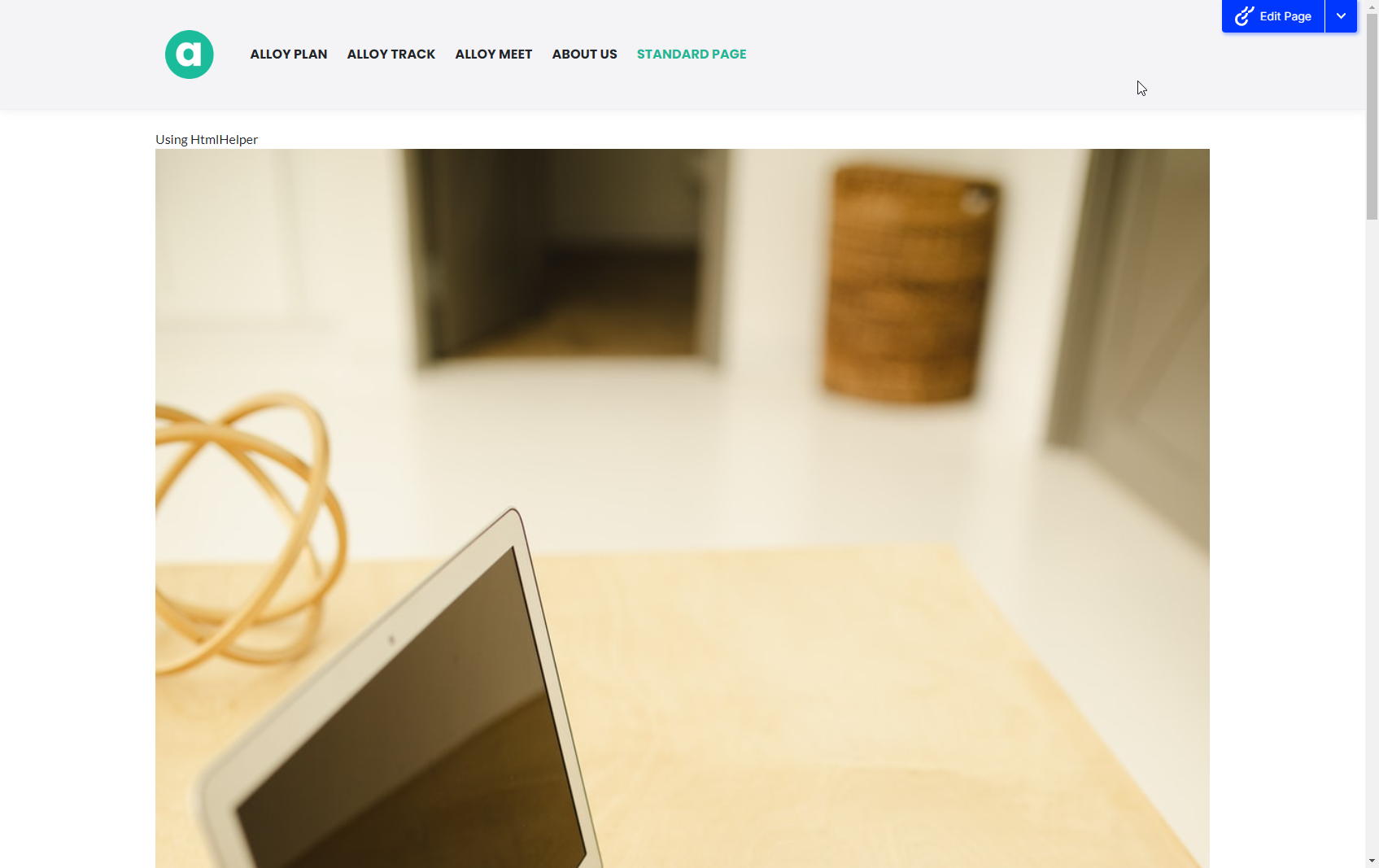CMP DAM Asset Picker in CMS
Describes how to set up a template site to use Optimizely Digital Asset Management (DAM) UI integration packages.
Package prerequisites
EPiServer.CMS.Core12.8.0 or laterEPiServer.CMS.UI12.9.0 or later
Install the Optimizely CMP integration package
- Enter the following command to install the Optimizely Content Marketing Platform (CMP) integration package.
$ dotnet add package EPiServer.CMS.WelcomeIntegration.UI - In
Startup.csadd the following line:services.AddDAMUi();
Configure the Optimizely CMP integration
See also Integrate CMP DAM Asset Picker in CMS.
You can customize the integration in the EPiServer\Cms section of application.json:
{
"DAMUi" : {
"Enabled" : true,
"Settings" : {
"Welcome" : {
"IconClass" : "dijitNoIcon",
"AvailableTypes" : "episerver.core.imagedata",
"StoreName" : "episervercmsdamcontentcreation",
"Endpoint" : "https://cmp.optimizely.com",
"Path" : "/cloud/library-picker"
}
}
}
}
IconClass– Choose an icon class. Default:dijitNoIcon.Availabletypes– Specify the editor command that is added only if it is (or inherited from) one of the available image types. Default:episerver.core.imagedataso properties that let you add an image have the new command.StoreName– Specify the server-side code (with your new store) to add your business logic. Default:episervercmsdamcontentcreation.EndPoint– Specify the endpoint to transform the root DAM domain for each environment you have (inte, preprod, or prod). Default:app.welcomesoftware.com.Path– Specify the path to the DAM library picker.
GlobalRootFolderGuid and RootFolderForTypes options properties
options.GlobalRootFolderGuid = "some-guid";
options.RootFolderForTypes = new Dictionary<string, IEnumerable<Type>>
{
{ "RootFolder1", new Type[] { typeof(DAMImageAsset), typeof(DAMVideoAsset) } },
{ "RootFolder2", new Type[] { typeof(DAMAsset) } }
};
The DAMOptions class includes the following properties to configure the root folder GUID and specify types for folders.
GlobalRootFolderGuid– A string that represents the GUID of the global root folder.RootFolderForTypes– A dictionary that maps between folder names and types.
Configure the connection to CMP
Prerequisite
Install
Optimizely.Cmp.Client.See Authenticate – Optimizely CMP Open API uses OAuth 2.0 as its authorization mechanism. Register an OAuth 2.0 app for an Optimizely Content Marketing Platform (CMP) organization to use the API. When your registration is successful, Optimizely CMP sends you a
client_idand aclient_secret.
An optional parameter to the AddDAMUi method lets you provide credentials.
services
.AddDAMUi(
o => o.Enabled = true,
o =>
{
o.ClientId = "YourApplicationClientId";
o.ClientSecret = "YourApplicationClientSecret";
}
);
You can also provide the Client ID and Client Secret through appsettings.json, as the second parameter in an Options configuration: CmpClientOptions.
Note
Available only in CMS 12, Optimizely supports images, videos and some files, such as PDFs, Word Documents, Excel Spreadsheets, Zip and 7Zip files. In the case of files, an anchor tag is rendered to link to that specific file.
You have the following options to use this feature:
- Use the provided C# service to get the metadata from CMP by injecting the
IDAMAssetMetadataServicewhere you want to use it.
TheIDAMAssetMetadataServicecontains one method,GetAssetMetadata(Guid id), which retrieves metadata from CMP using the GUID of a specific asset. This GUID can be found within the information dialog of any asset in CMP. - Use the
HtmlHelperextension method,RenderTagWithMetadatawhich renders an appropriate HTML tag based on the retrieved asset.
To use it, import@using EPiServer.Cms.WelcomeIntegration.UI.Helpers;inside a .cshtml page of choice, and use the page model that contains aContentReferenceproperty.
Then, call@await Html.RenderTagWithMetadata(x => x.YourWelcomeContentReference)with an expression that provides aContentReference. You should link thisContentReferenceto a CMP Asset.
Your page should now render an image, a video, or a link to the supported file with the respective metadata attached to the HTML tag. - Use the
TagHelpercalledDAMAssetTagHelper, which does the same thing as above but is used differently.
To use it:- Add the tag helper in your
\_ViewImports.cshtml file:@addTagHelper \*, EPiServer.Cms.WelcomeIntegration.UI. - Add
\<dam-asset content-reference="@Model.YourWelcomeContentReference"/>to your .cshtml page of choice.
Your page should now render an image, a video, or a link to the supported file with the respective metadata attached to the HTML tag.
- Add the tag helper in your
The following example shows HtmlHelper and TagHelper on Alloy site:
@using EPiServer.Cms.WelcomeIntegration.UI.Helpers;
@model PageViewModel<StandardPage>
Using HtmlHelper
@await Html.RenderTagWithMetadata(x => x.CurrentPage.WelcomePageImage)
Using TagHelper
<dam-asset content-reference="@Model.CurrentPage.WelcomePageImage"/>
The result is shown in the following image.

Configure security headers
If your site uses content security policy (CSP) headers, ensure that https://app.welcomesoftware.com is included to prevent errors in the CMS UI when selecting assets.
Related topics
Looking for installation on CMS 11?
See Install the Optimizely DAM Asset Picker (for CMS 11).
Updated 3 days ago
